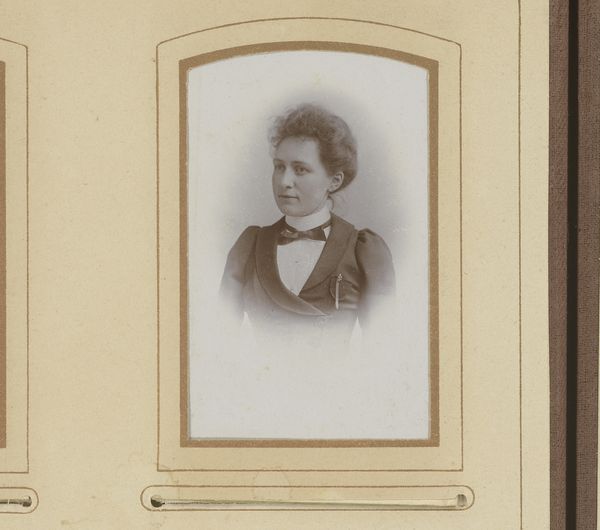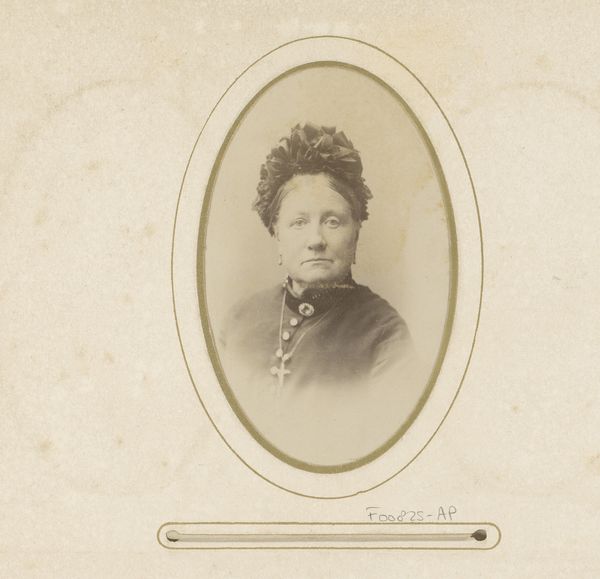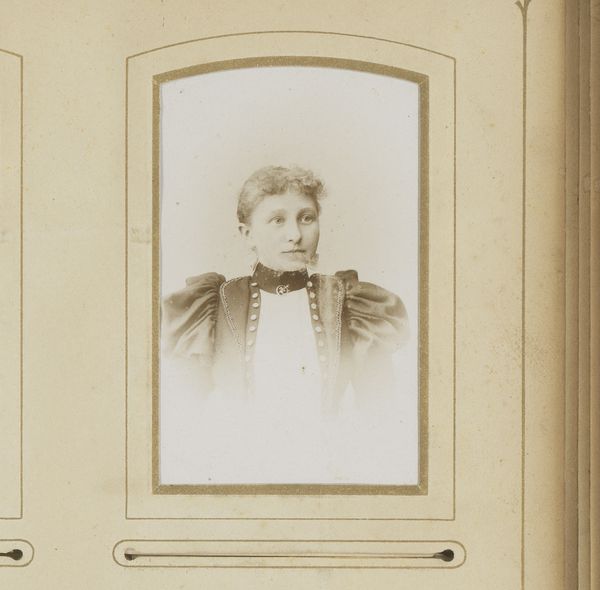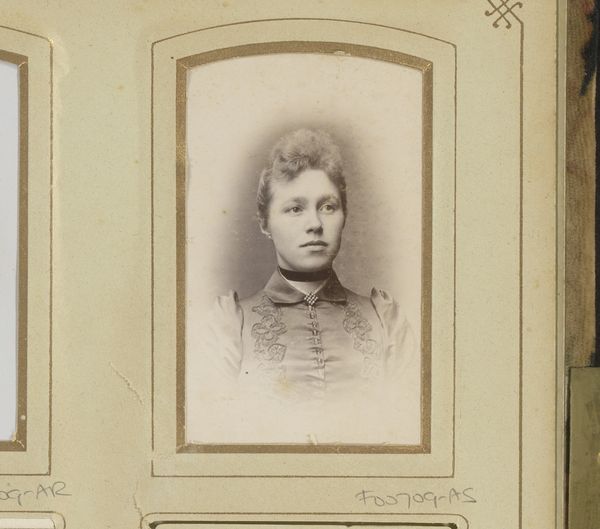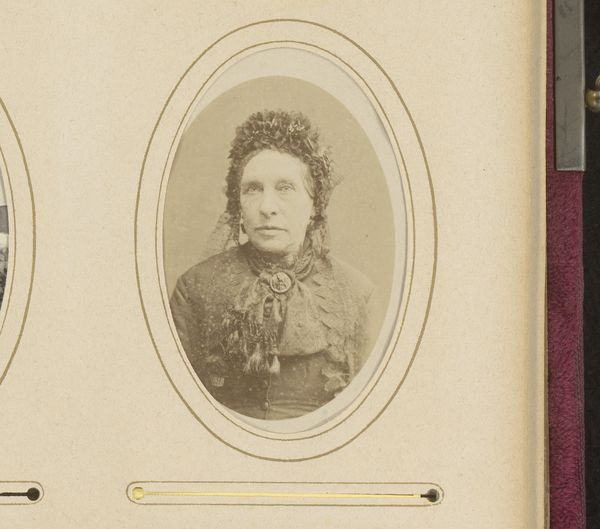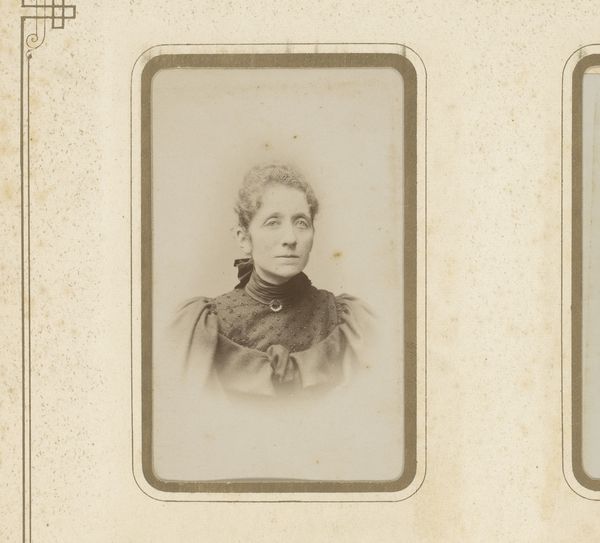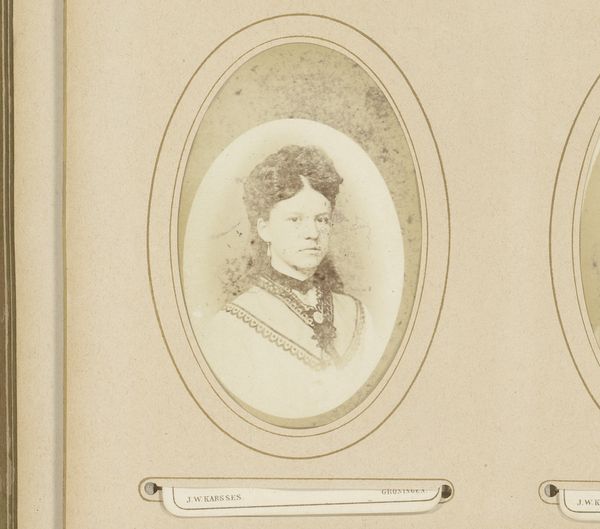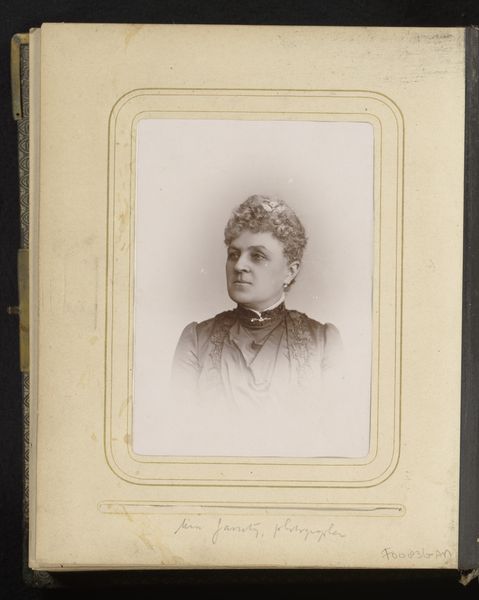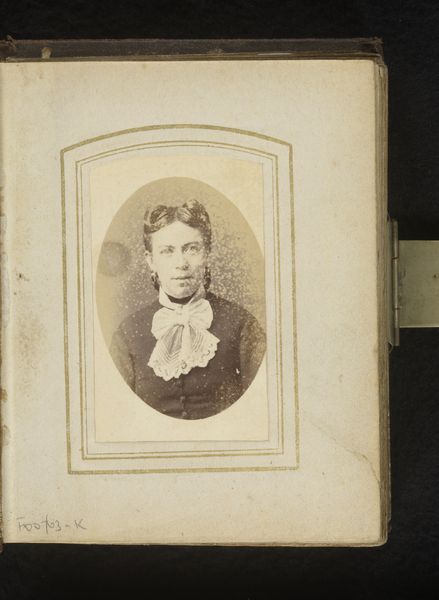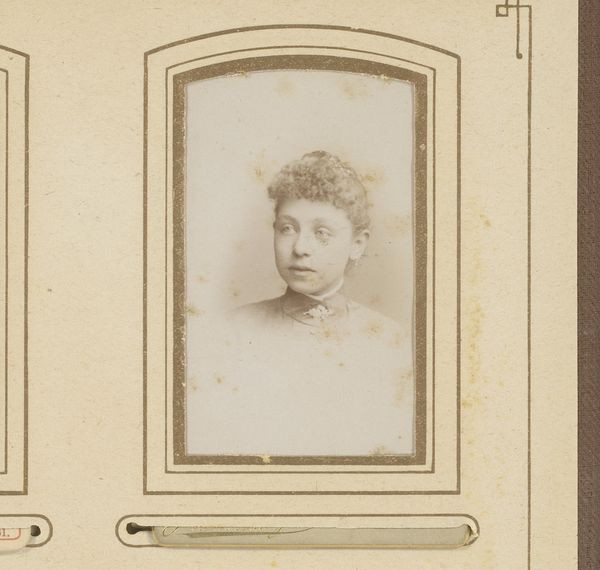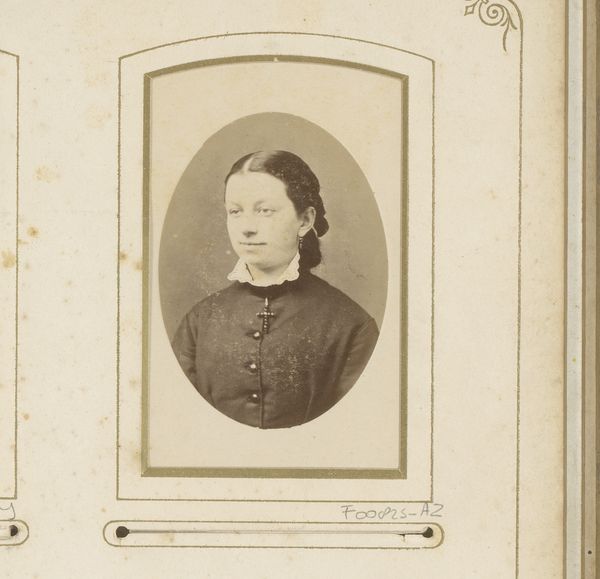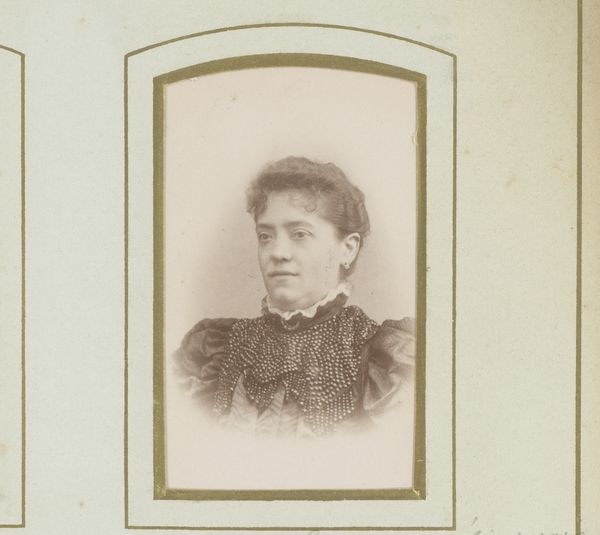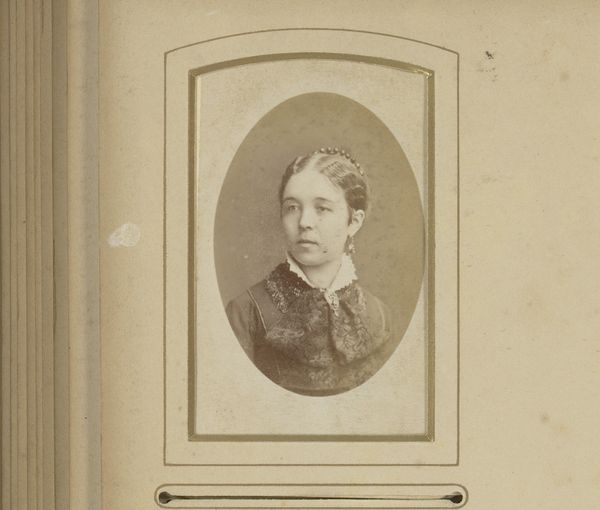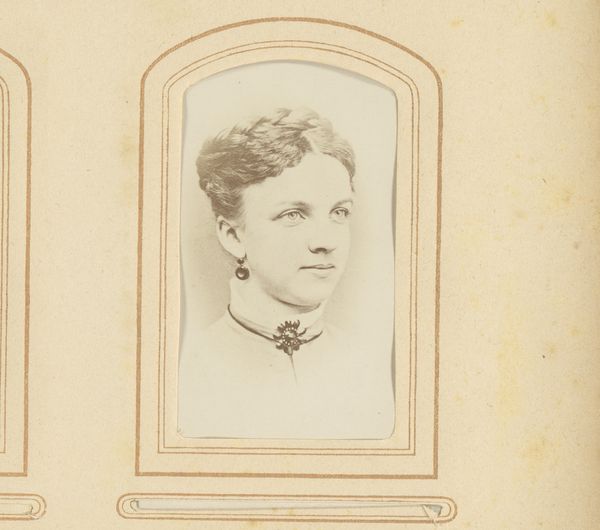
photography
#
portrait
#
self-portrait
#
photography
#
19th century
Dimensions: height 82 mm, width 51 mm
Copyright: Rijks Museum: Open Domain
Curator: Here we have a portrait photograph entitled "Portret van een vrouw met halsketting," dating to somewhere between 1860 and 1900, by Julius Halffter. Editor: The soft sepia tone and the subject's composed expression give the image a certain gravitas. There is a feeling of solemn dignity. Curator: Photography at this time was far from instantaneous; it required elaborate preparation and a commitment on the part of both the photographer and sitter. We are really looking at the results of considerable collaborative labor. The creation of each photographic print demanded skill and patience, both valuable attributes. Editor: Absolutely, and labor shaped by its own specific constraints of gender and class! One imagines this woman positioned within a social landscape where her representation had real implications – who commissioned the portrait, and for what purpose? Is this for marital prospects, to present the family with honor and pride, to secure inheritance? The necklace reads of the material, and the portrait of its performative dimensions of bourgeois selfhood. Curator: Note, too, the presentation – the oval matte around the photograph, the inscription just below, likely identifying the sitter. Consider this object as it circulated: perhaps mounted within a family album, passed among relatives, carried across geographical divides. What stories of the image-making itself might be recovered to learn about materials that are no longer considered valuable, labor not seen as specialized, and an artistry that is still relevant. Editor: That focus on circulation is critical. What new resonances does this image gather when viewed through a contemporary lens? Does it speak to ideals of beauty or identity that resonate still? In my view, reflecting upon this allows us to reassess not only the values of the past, but those implicit in how we engage with such representations today. It urges us to reckon with questions of agency, representation, and the subtle negotiations between individual self-expression and broader societal norms. Curator: Well, looking closer, I think it serves as a testament to a collaborative artistry from which to draw broader socio-economic histories that we can engage with and share today. Editor: I find I'm now curious about who she was, beyond her societal representation. How her life intersected with those turbulent historical moments. It certainly makes me want to investigate more.
Comments
No comments
Be the first to comment and join the conversation on the ultimate creative platform.
